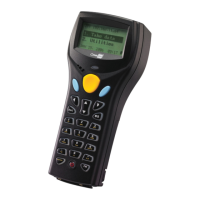1
CipherLab BASIC Compiler provides users with a complete programming environment to
develop application programs for CipherLab 8 Series Mobile Computers using the BASIC
language. The Windows-based Basic Compiler comes with a menu-driven interface to
simplify software development and code modifications. Many system configurations, such
as COM port properties and database file settings can be set up in the menus. Using this
powerful programming tool to get rid of lengthy coding, users can develop an application
to meet their own needs efficiently. The CipherLab BASIC Compiler has been modified
and improved since its first release in November 1997. Users can refer to RELEASE.TXT
for detailed revision history.
This manual is meant to provide detailed information about how to use the BASIC
Compiler to write application programs for CipherLab 8 Series Mobile Computers. It is
organized in chapters giving outlines as follows:
Part I: Basics and Hardware Control
Chapter 1 “Development Environment” –
gives a concise introduction about the CipherLab
BASIC Compiler, the development flow for applications, and the BASIC Compiler
Run-time Engines.
Chapter 2 “Using CipherLab BASIC Compiler” –
gives a tour of the programming environment of
the BASIC Compiler.
Chapter 3 “Basics of CipherLab BASIC Language” –
discusses the specific characteristics of the
CipherLab BASIC Language.
Chapter 4 “BASIC Commands” – disc
usses all the supported BASIC functions and statements.
More than 200 BASIC functions and statements are categorized according to their
functions, and discussed in details.
Part II: Data Communications
Chapter 1 “Communication Ports”
Chapter 2 “TCP/IP Communications”
Chapter 3 “Wireless Networking”
Chapter 4 “IEEE 802.11b/g”
Chapter 5 “Bluetooth”
Chapter 6 “GSM/GPRS”
Chapter 7 “Modem, Ethernet & GPRS Connection”
Chapter 8 “USB Connection”
Chapter 9 “GPS Functionality”
Chapter 10 “FTP Functionality”

